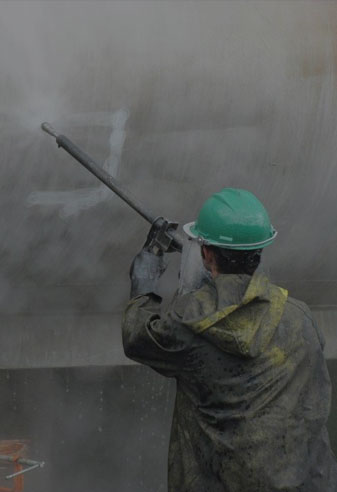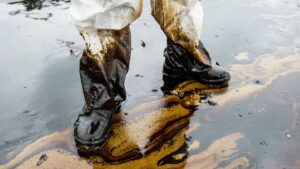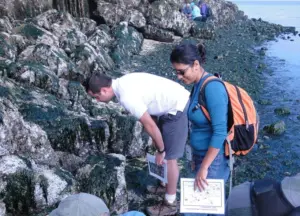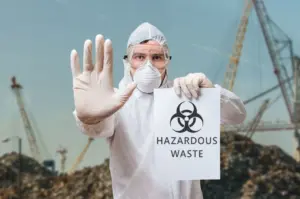Between 2010 and 2019, there were a total of 1.8 major oil spills each year that each released more than 700 metric tons of crude oil into the environment.
Although the number of oil spills has drastically reduced over the last few decades, even a more “minor” oil spill can cause substantial damage to the surrounding environment.
Once an environmental control team gets the call to assess a spill, there are several potential approaches to cleaning up an area and protecting the environment from crude oil. However, the differences between offshore and onshore cleanup efforts are vast.
Let’s dive deeper into the different cleanup approaches for the two types of oil spills and how cleanup services from TAS Environmental Services can mitigate local spill damages.
Onshore Oil Spill Cleanup Efforts
The first step in clearing out an onshore oil spill is general containment. Our team will initially place land booms that serve as a protective barrier that prevents oil from spilling beyond the surrounding area.
Responders then focus on soaking up the large puddles of oil with highly absorbent hydrocarbon pads. These pads are extremely useful because each package of pads can absorb between 18 and 31 gallons of oil. From there, they are easily disposed of in sealed plastic bags.
The final step in resolving an onshore oil spill is spreading floor sweep absorbent throughout the remaining affected on-land areas. This process can even include clearing out oil from soil that was impacted by a spill.
Floor sweep absorbent is a powerful cleanup material because it’s an easily spread powder that contains absorbing microbes that activate when they come in contact with oil. Once contact occurs, the absorbent rapidly turns liquids involved in a spill into a more solid mass that trained teams can easily collect and dispose of.
While we’ve just condensed a massive undertaking into one section of our blog, the truth is that a mainland oil spill can take around 4 months for a trained crew to clear out.
Offshore Oil Spills
Unlike mainland spills, off-shore spill cleanups have to contend with unpredictable wind and wave patterns that can easily spread a spill to disastrous proportions. To put it simply, even a minor spill can take upwards of 15 years for a crew to clean up.
However, a team like TAS Environmental Services is dedicated to its cause and will implement the most appropriate strategies to protect as much marine and coastal life as possible.
Unfortunately, when it comes to an offshore spill, it can be difficult to implement a solution that keeps every aspect of the environment safe. Let’s take a look at some of the top ways a professional cleanup team would address an offshore spill.
Containment Booms and Sorbents
Divers disperse and set up containment booms that cut off oil spills in specific areas. While oil booms in the water are useful for minor spills, the larger the ocean spill the more difficult it is to contain the issue.
Environmentalists will then attempt to soak up the oil through sorbents. These sponge-like tools are used to soak up oil in the ocean and can hold up to 90 times their weight. Using sorbents is best when thick crude oil is involved.
Skimmers
If soaking is an ineffective process, teams can deploy skimmers that essentially vacuum the water from the surface and separate the oil from the water. Although this process can be successful, if debris is sucked into a skimmer it can easily clog up and be rendered useless.
In-Situ Burning
In extreme circumstances like the 2010 Deepwater Horizon oil spill, in-situ burning has been used to literally burn off the oil from the surface of the infected water. Although this process does remove about 98 percent of the spilled oil quickly, it can still result in long-term impacts to below-ground vegetation in the affected area.
TAS Environmental Services is Prepared to Handle Any On or Off-Land Oil Emergencies
It’s clear that any oil spill is a serious situation that requires immediate response from an experienced, professional, environmental service team. At TAS Environmental Services, our spill support teams are on-call 24/7 and prepared to help you keep your community and the environment contaminant-free.
If your Texas company suffers a mishap that results in a dangerous oil spill, never attempt to resolve the issue on your own. Contact us immediately for swift response and environmentally-focused cleanup solutions.





